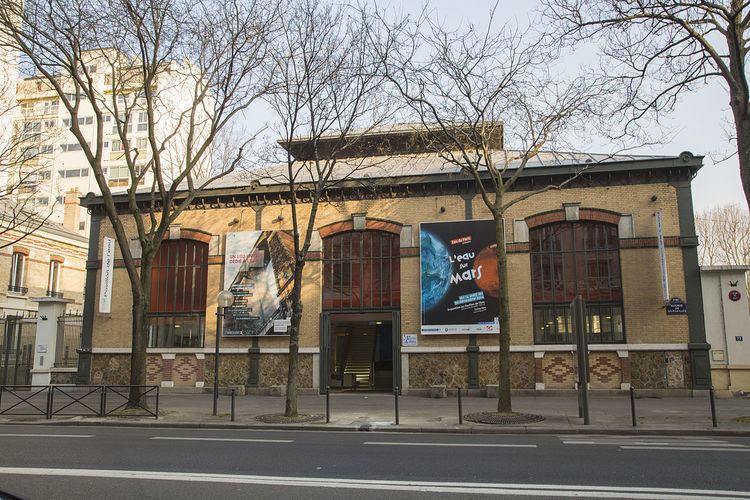Established 2007 Opened 2007 Public transit access Mirabeau, Gare de Javel | Visitors 39 000 (2014) Phone +33 1 42 24 54 02 | |
 | ||
Location 77, avenue de Versailles75016 Paris, France Website www.eaudeparis.fr/lespace-culture/pavillon-de-leau Address 77 Avenue de Versailles, 75016 Paris, France Hours Closed today SaturdayClosedSundayClosedMonday10AM–6PMTuesday10AM–6PMWednesday10AM–6PMThursday10AM–6PMFriday10AM–6PMSuggest an edit Similar Mirabeau, Musée d'art et d'histoire de Saint, Église d'Auteuil, Wallace fountain, Palace of Poitiers | ||
Catia pavillon de l eau
The Pavillon de l'eau is a museum devoted to water belonging to the City of Paris and managed by Eau de Paris, the municipal agency in charge of production and distribution of water in Paris. The Pavillon de l’eau offers a permanent exhibition about the water supply history of the city, temporary exhibitions, children's activities (educational workshops, screenings, performances etc.) and thematic meetings.
Contents
- Catia pavillon de l eau
- Lancement gamme 0 au pavillon de l eau paris
- History
- Permanent exhibition
- References
Lancement gamme 0 au pavillon de l eau paris
History
In 1828, on the ancient road to Versailles, a steam pump was installed in order to pump water from the Seine to supply the municipalities of Auteuil and Passy.
At the end of the nineteenth century, the old steam pumps are obsolete. Consequently, the City Council of Paris voted the construction of a new pumping station to take advantage of the latest technological innovations. The station (named station A) consists of two buildings, the engine room and boiler room, both characterized by a brick structure and large roofs topped by skylights that allow a wide ventilation and lighting.
However, even this new pumping station becomes outdated, especially regarding its coal consumption. So at the end of the First World War a new project is launched to be attached to the existing pump, the station B (powered electrically from 1952). In 1955, the station A is dismantled and the engine room is primarily used as a garage, and then as an office for administrative services until 2007, when the Pavillon de l'eau is inaugurated.
Permanent exhibition
Alimenter Paris en eau is an exhibition about the water supply of Paris and its history from Roman aqueducts to nowadays.
Paris was born and grew up with water. Since the beginning of our times, when Paris was still called Lutetia, the city has experienced four different periods of production and distribution of water. The Roman age, the Middle Ages, the Modern era and the nineteenth century Industrial Revolution.
